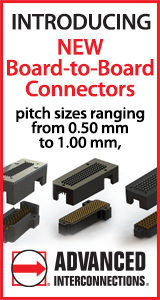Authored By:
Robbie Huffman, David Decker
Samtec, Inc.
IN, USA
Summary
Interconnect miniaturization and reliability are becoming increasingly important, especially in complex, smaller, lighter, denser, and more portable applications in industries such as mil/aero and medical. Traditional surface mount and through-hole interconnects are reaching their limits on density and the number of signals that can effectively be used, and many product design teams are increasingly required to implement high I/O array component styles. Pin-in-ball surface mount area arrays (SMAA) have been widely used in the industry for decades but have lacked IPC classification. The demand for board-to-board (B2B) SMAAs with the capacity to satisfy IPC-A-610 and IPC J-STD-001 Class 3 acceptance criteria is increasing as these types of interconnects are necessary for technological advancements. Many current pin-in-ball interconnects offer straight tails and minimal tail penetration into the ball.
By contrast, the Next Generation Pin-in-Ball Grid Array connectors, and similar non-solder ball versions, offer contoured tails, deeper tail penetration and, therefore, an increased solderable surface area. These next generation interconnects were developed to offer dense components capable of meeting today’s performance demands, such as 112Gbps PAM4 (56 Gbps NRZ), while providing robust and reliable solder joints. This paper will focus on the research and development of the Next Gen Pin-in-Ball Grid Array connectors, and the non-solder ball versions, with emphasis on reliability testing per IPC-9701 and EIA-364-100 and the prediction of performance in harsh environments.
Conclusions
As packages continue to evolve in complexity and miniaturization, interconnects and solder attachment methods must also evolve to meet demands.
Today’s SMAA technologies have reached or are near limits regarding pitch, signal integrity, etc. As the results and data in the previous sections show, the Next Gen Pin-in-Ball Grid Array was designed for advanced and future applications. The test data and current major OEM applications show that this design meets or exceeds all current expectations and requirements for SMAA technologies.
Initially Published in the SMTA Proceedings
|




